7. L’Avventura (1960)
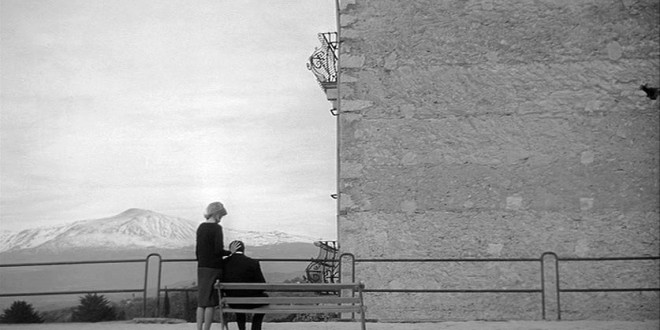
Fate played a strange trick on international directors Ingmar Bergman and Michelangelo Antonioni by having them die one day apart. The juxtaposition caused many writers to compare and Bergman, who had the much longer time in the major international spotlight, did not come off well. Many wrote that his style was largely melodramatic and theatrical and hadn’t stood the the test of time as well as Antonioni’s films from the 60s and early 70s, when he was in vogue. The critics had a point.
The director often looked at the sleek but empty lives of Italian jet-setters and created a look which as influenced fashion photography with its cool and knowing assurance. However, these stylish images are only part of the story. Few directors have ever understood how settings can influence the characters in the film. His first noted film, and one of his best, was L’Avventura, a tale of how even a mysterious disappearance can’t sustain interest in a world devoted to empty sensation.
Time and again the natural and man-made objects placed in the backgrounds of the actions make telling comments on the foreground actions. Also the craggy, volcanic island where a pivotal part of the plot takes place is perfectly rendered. Incisive black and white was a must but the superb widescreen composition helps to make the film unforgettable.
8. Last Year at Marienbad (1962)
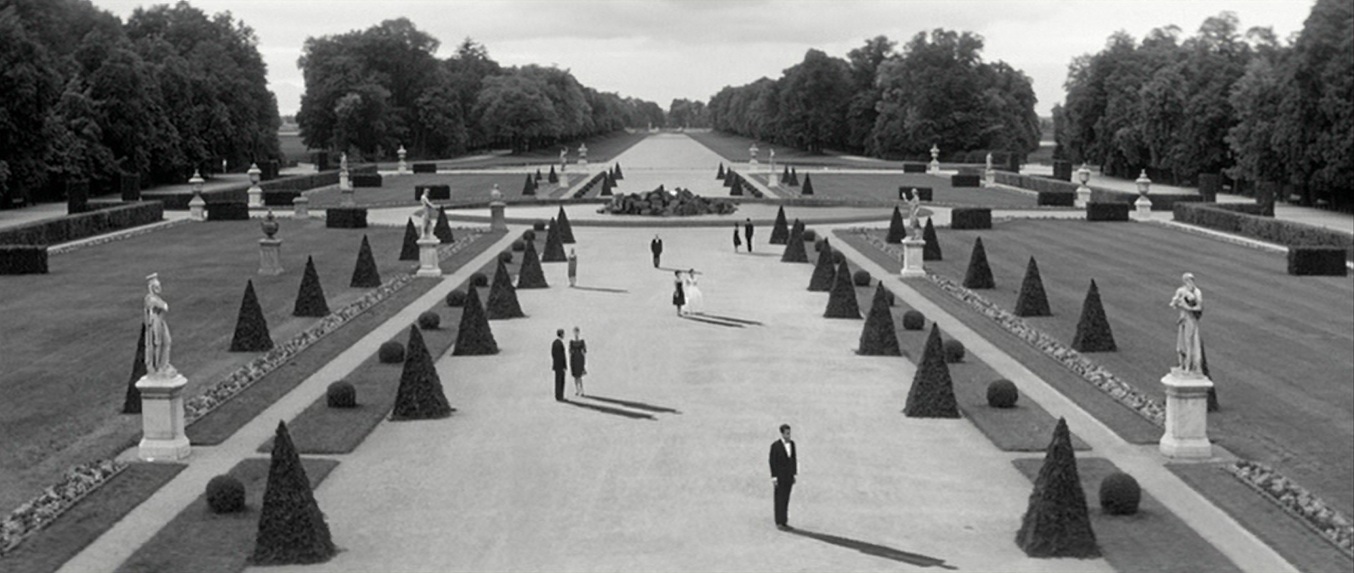
The audacious, deeply artistic and thoughtful French director Alain Renais made his mark on the cinematic world with the daring, avant-garde 1959 film Hiroshima, Mom Amour, one of the most critically acclaimed films of its time. Such a film can cripple a career by coming so early, making everything thereafter seem anit-climatic. It is a sign of the director’s talent that he instead came back with another notably daring film, one of the most stunningly designed black and white anamorphic films ever.
This is Last Year in Marienbad. The story, as stylized as the film’s visuals, tells the tale of three elegant people (all designated with single letter names) who meet at a beautiful but formally quite rigid resort. The woman is married to one of the men. The other man keeps trying to remind of an affair he and she supposedly had a year before, an event she resolutely refuses to acknowledge.
This is not a tale which can be interpreted on a literal, realistic level and the film’s style conveys this. In fact, the rectangular monochromatic images of the resort grounds frequently look like a gigantic gameboard (which is quite appropriate to the action) and the austerely lovely visuals create a dream of sophistication which may never have existed.
9. The Tarnished Angels (1958)
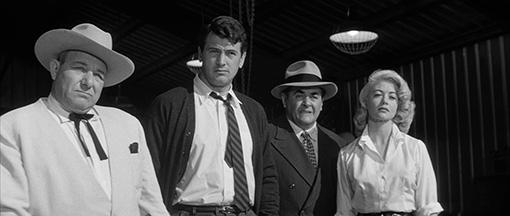
Director Douglas Sirk is mostly associated with the numerous vividly colored melodramas he created in the second half of the 1950s. However, much of his career was spent filming in black and white. During his Technicolor days he made a number of films in widescreen but only one in both monochrome and anamorphic dimensions.
Oddly enough, many consider it to be his masterpiece though, typically, it was the one big financial loser he created during that era. After scoring several big hits for Universal International, Sirk was given the gift of choosing his own project to film. To the dismay of the execs he chose an obscure William Faulkner novel from the 1920s entitled Pylon.
The novel told the story of a stunt pilot, his mechanic, and the pilot’s wife, whom both men share and a number of dramatic events involving them with a dissipated newspaper reporter against the backdrop of the Mardi Gras. Faulkner’s point was that the rootless amoral trio were a new breed of human, as much machine as flesh and blood.
Universal wasn’t crazy about the idea and decided to be cut rate about it, including denying Sirk his desired use of color. Though the director was dismayed, he masterfully used the anamorphic monochrome to telling effect. In all honesty, the incisive black and white widescreen, marrying and older and newer technology, was perfect for a period story concerning the dawning of a new age.
Sirk always had an excellent eye for composition, especially in the relatively few anamorphic films he created and this one is no exception. Scenes set during the Mardi Gras and one during an ariel disaster are especially well staged. Also the black and white look gives the film a more serious patina than many Sirk films achieve. This was one time the studio was wiser (however inadvertently).
10. The Longest Day (1962)
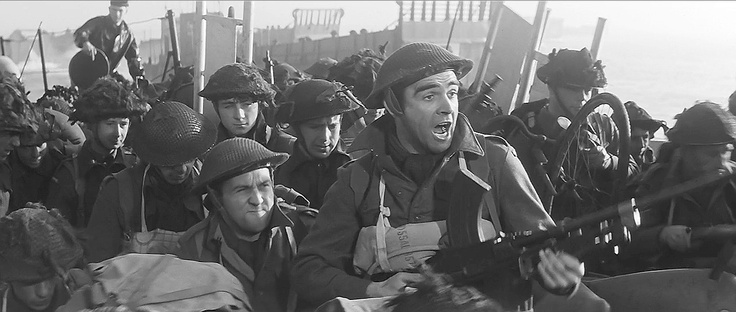
Irony strikes again! Not only did Darryl Zanuck swallow his words concerning black and white by making Compulsion but he was swept back to power at Fox thanks largely to one of the biggest monochromatic anamorphic films ever made. Twentieth Century Fox was reeling under inept management which had fostered the greatest of all Hollywood runaway productions, 1963’s Cleopatra.
Seeing his change to get back in the driver’s seat, Zanuck arrived from Europe with the film which managed to get the studio through until even bigger hits finally put them back on solid ground. This was his production of The Longest Day. Taken from the acclaimed non-fiction bestseller by the noted Cornelius Ryan, the film, quite simply, tells the story of D-Day, June 6. 1944.
For what is basically a Hollywood production of that day it is strikingly non-Hollywood. There are no central characters or locations. There are multiple strands enacted by a large international cast, all speaking in their own languages. There were also three directors, Ken Annakin, Andrew Marton, and the distinguished German director Bernhard Wicki (yes, the film includes the German side of things, too).
The result was one of the great films of its genre. The thought of color for this film would have been a great mistake. Many who survived the real event were technical advisors on the film and the level of verisimilitude was quite high. The black and white photography gave the film a correct documentary feeling and the wide screen showcased many superbly staged action scenes. This one was a labor of passion and it showed.
11. In Cold Blood (1967)
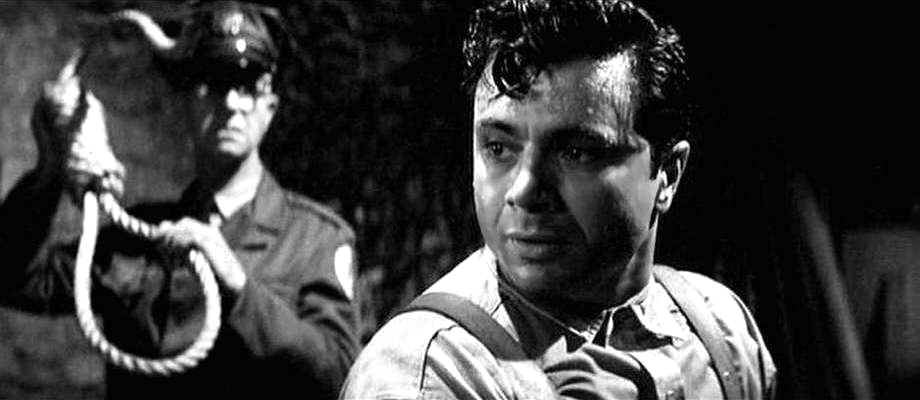
With color becoming more and more of a given, black and white was breathing its last gasps by 1967. In light of this the searing In Cold Blood managed to get released at the last real moment in time in order to capture the look and feel it required.
Based on Truman Capote’s now classic “non-fiction novel”, the film relates the events leading up to a crime which shocked the nation. Four members of a Kansas family were brutally murdered in their home by two criminal drifters who mistakenly thought that there was a great sum of money in their home.
Even after finding ther was none, they murdered the family anyway. The choice of black and white was a must given that the film was after documentary like realism (the actors were mostly unknown at the time and, to a large extent, later and the film shot on many of the real locations, including the scene of the crime).
However, the wide screen heightens the realism when combined with cinematographer Conrad Hall’s alternately sharply harsh and expressionistic photography. Combined with writer-director Richard Brooks’ objective but sympathetic handling, the film resembles nothing less than a waking nightmare.
12. High and Low (1960)
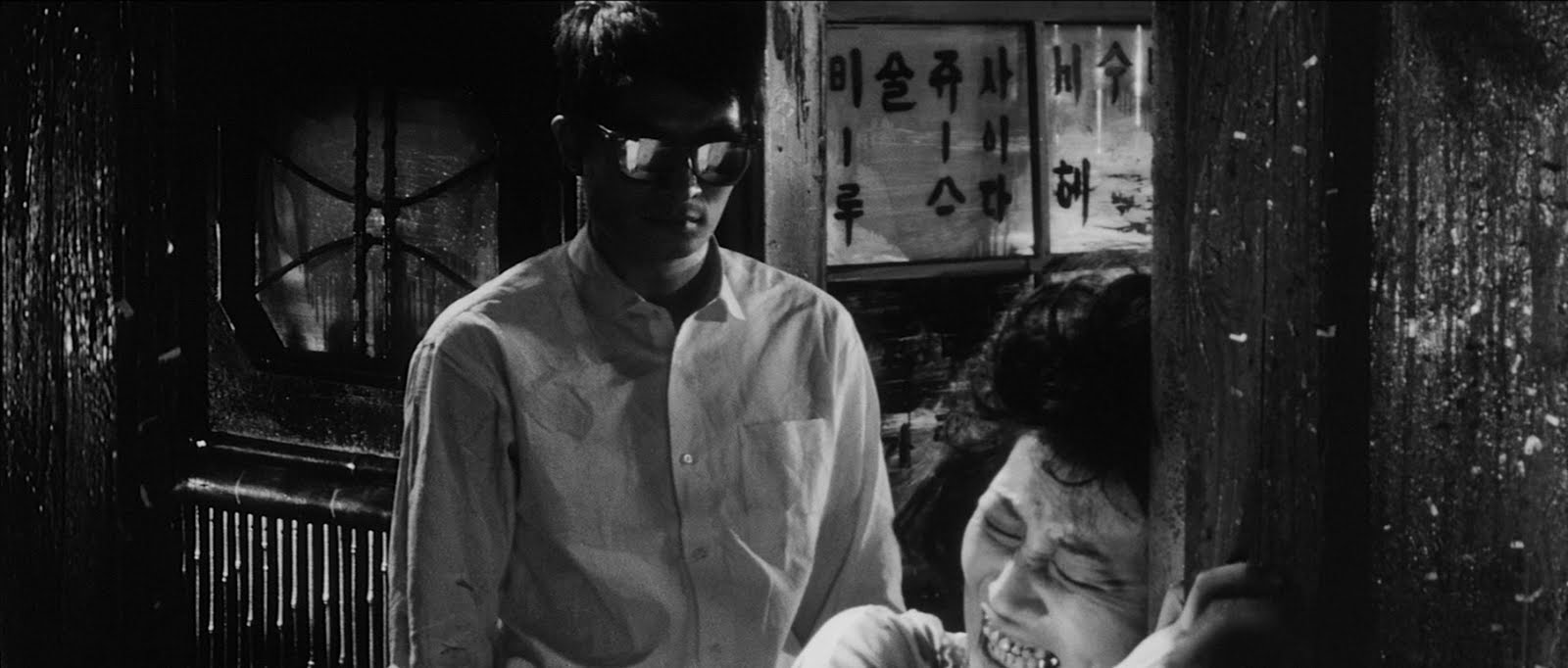
It’s often quite interesting how one country will view and interpret the culture of another. The novels of Ed McBain (who also was well known another pseudonym, Evan Hunter) concerning a police station called the 87th Precinct were well thought of by crime fiction fans but were considered genre pieces. Who would have thought that the great Japanese director Akira Kurosawa would use one of the novels to create a masterful study of evil and moral conflict.
A hard driving executive has amassed enough money to mount a hostile takeover of his company. Then a call comes from a man who claims to have kidnapped his young son. It turns out the boy is safe but the chauffer’s son wasn’t so lucky. The man feels relieved at first but then realizes that he can’t let an innocent child die. The second half of the film focuses on the kidnapper and his twisted mind.
Once again the superb monochromatic widescreen is sharp, clear, intense and conveys a darkly gray world of conflicted motives, excellently orchestrated by one of the world’s finest film makers.
13. The Red and the White (1967)
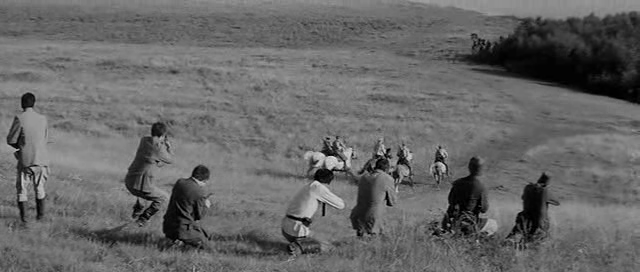
It always took a brave film maker to dare to create films which ran counter to the party line in the countries behind the former Iron Curtain. Miklos Jancso was such a brave director.
The Red and the White was assigned to him as a project to glorify the October Revolution which swept the Bolsheviks to power. Instead he created a film set in 1919 showing the revolutionary activity from the point of view of Hungarian partisans, captives of the Bolshevik army, who are fighting against their captors. (The director is Hungarian.)
The style of the films is amazing. The story is told mainly is long, widely panoramic shots which show great interaction among groups of people as the warfare inflicts cruelty on both sides. The cinematographer was Tamas Somlo and he helped to create one of the most notably stylized films ever shot in black and white.